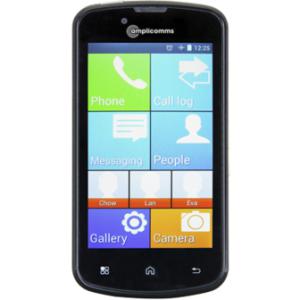Flash firmware on Amplicomms PowerTel M9000
Mobiles >> Amplicomms >> Amplicomms PowerTel M9000| Specifications | Reviews | Secret codes |
| Unlock phone | Root phone |
| Backup | Flash Firmware | Screenshot |
How to flash Amplicomms PowerTel M9000?
Why reinstall the firmware?
Errors in the Android OS start to appear regularly.
Apps won't open.
Some applications from the Play Market do not start.
The phone restarts or shuts down randomly.
The phone began to work slowly.
You want to update the firmware, as it does not suit you in terms of functionality.
Where can I find the firmware?
On the website of your phone manufacturer.
On sites where users post custom or official OS.
What should be done before installing the firmware?
Create a backup copy of user data, contacts and photos and transfer it to your computer.
Insert your SD card into your phone. It must have enough memory to fit the firmware.
Find information about your smartphone model.
Fully charge your device. If the battery runs out during the firmware, the device will no longer turn on.
Find and download the archive with Firmware. And place it on the SD card.
Installing TWRP Recovery
Install the Official TWRP App from the Play Store on your phone.
When you start the application for the first time, you must agree to install a new firmware and all the risks associated with this, as well as agree to grant the application Superuser rights and click the 'OK' button.
On the next screen, you need to select the 'TWRP FLASH' item and give the application root-rights.
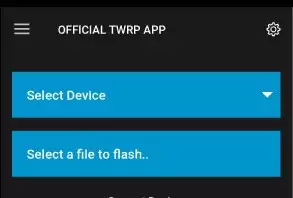
On the main screen of the application, click 'Select Device', and find your phone model.
After selecting the phone, the program will redirect the user to a web page to download the corresponding image file of the modified recovery environment. Download the proposed *.img file.
After downloading the image file, go to the main screen of the Official TWRP App and press the 'Select a file to flash' button. Then we tell the program the path where the file loaded in the previous step is located.
Press the 'FLASH TO RECOVERY' button and confirm your choice.
When the message 'Flash Completed Succsessfuly!' appears on the screen. Click the 'OK' button. The TWRP installation procedure is now complete.
Copy the firmware and other necessary files to the SD card.
Insert a memory card into your phone.
To reboot into recovery, you need to enter the menu accessible by pressing the button with three stripes in the upper left corner of the main screen of the application. Select the 'Reboot' item, and then click on the 'REBOOT RECOVERY' button. The phone will reboot into the recovery environment automatically..
Firmware via TWRP
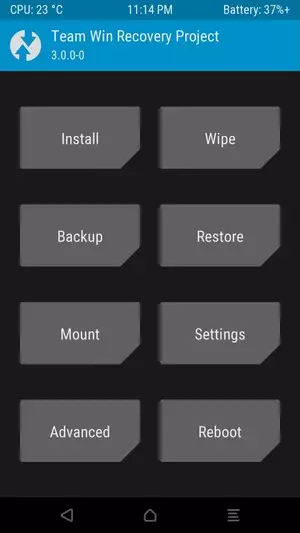
Before flashing, it is recommended to clear the 'Cache' and 'Data' sections. This will delete all user data from the device, but avoid a wide range of software errors and other problems. You must press 'WIPE' on the main screen.
Now you can start flashing. Click the 'Install' button.
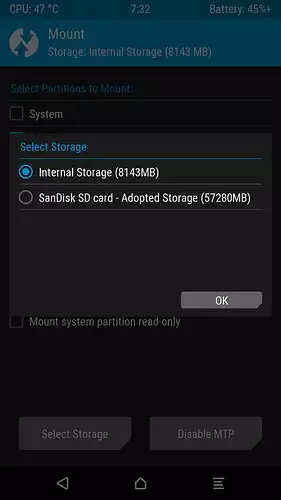
On the file selection screen, at the very top there is a 'Storage' button for selecting an SD card.
Select the location where the files were copied.
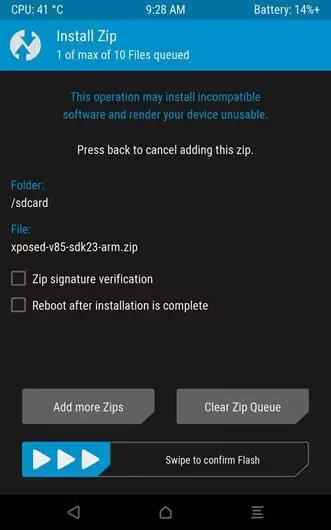
Select the firmware file and click on it. A screen opens with a warning about possible negative consequences, you need to check the item 'Zip signature verification', which will avoid using corrupted files when writing to the phone's memory sections.
The procedure for writing files to the phone's memory will begin, accompanied by logging and filling in the progress bar.
When the procedure for installing the firmware is completed, the message 'Successful' appears on the screen.
Summary: Operating system: Android 4.2; OS vendor: Google; Type: Mobile phone; Shape: Slate; Height: 126.0 mm; Length: 66.3 mm; Width: 11.9 mm; Weight: 126 g; Main Camera: 5.0 MP, 1944 x 2592 pixel; Front Camera: 0.3 MP; Screen Size: 4.0"; CPU: 1.2 GHz, Dual-core; Internal memory: Max: 4.0 Gb, RAM: 512.0 Mb; External memory: microSD card (microSD), Max: 32 Gb; GPS: Yes; SIM: Mini-SIM; Communication: WLAN, Bluetooth, 3G, 2G; Bluetooth: 2.1; NFC: No; 4G: -; HSDPA: Yes; HSPA: Yes; HSUPA: Yes; UMTS: Yes; WCDMA: Yes; EDGE: Yes; GPRS: Yes; WLAN: 802.11b, 802.11g, 802.11n; GSM standby time: 224 hours; GSM talk time: 6 hours; ...
Comments, questions and answers on the flash firmware Amplicomms PowerTel M9000
Ask a question about Amplicomms PowerTel M9000




